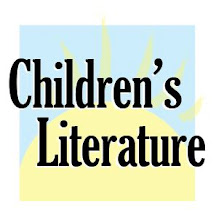Valerie O. Patterson grew up in the Florida Panhandle, and her love of blue is evident in her young adult novel,
The Other Side of Blue. Fifteen-year-old Cyan is still grieving, when she and her mother return to the island of Curaçao, in the Caribbean, where a year previously her father drowned. Family relationships, romance, and mystery are elegantly interwoven in this poignant coming-of-age story.
A conversation with Valerie O. Patterson
Emily Griffin: The Other Side of Blue is your first published novel. How did Cyan and her story develop?
Valerie Patterson: I began
The Other Side of Blue and another project during a writing class with Han Nolan at Hollins University. The other project also involved the color blue and a mysterious death! Hmmm...I'm not sure what that means. With regard to this novel, I have long been intrigued by art, mother-daughter relationships, and the ocean. The character of Cyan came to me first. Then came the mystery of the absent father. I did not have a fully developed plot before I began writing. For me it was the sound of Cyan's voice, which was so not my own, that drove me to explore the story further, to find out what happened.
EG: How did the dynamics of the story change and grow as you wrote? Did you have a strong path you wanted to follow?
VP: I'm one of those writers who tend to write to find out what the story is all about. Though I'm trying to be more disciplined about outlining and understanding the overall arc in my novels before starting,
Blue almost certainly was of the first variety. I had to go back and think about subplots and how to weave in other threads. Then, the last third of the book came very quickly.
EG: A year after her father's death, Cyan and her mother struggle to understand each other. Can you talk about their relationship?
VP: Yes, I think the mother-daughter relationship can be very complicated, involving tension as daughters move to find their own means of expression rather than follow what worked for their mothers. I also think some artists—regardless of medium—fall prey to insecurity. Cyan's mother strikes me that way—seemingly sure of her talent and yet controlling over her daughter's desire to express herself differently. Her insecurity leads her, I believe, to be controlling.
EG: What surprised you most about the whole process of writing and publishing a young adult novel?
VP: I have been surprised by how emotional getting a first novel published was for me. It has been a bit of an emotional rollercoaster. There is nothing more thrilling than having a book accepted and published and to hold it in your hand for the first time. At the same time, being published creates a new level of anxiety. Will the book touch readers? Will I be able to write another one?
EG: Before you got an MFA in Children's Literature from Hollins University you were a lawyer, correct? What inspired the switch? And how does your law background affect your writing process?
VP: Switch? Oh, I wish! I still have a demanding day job. Don't get me wrong—I enjoy the analytical rigor of the legal field, but my first love has always been the written word. As an undergraduate, I was an English and Spanish double major. I wrote a great deal of not-very-good poetry and some short stories. Law school meant I did not write again creatively for several years. Even afterward, I found it very hard to write. But, gradually, the creative drive returned. I'm very grateful to have that part of my life back.
EG: What's next? Are you working on anything new?
VP: Yes, I just completed a very rough draft of a novel for a slightly younger audience. The story is about a girl whose father deploys to Afghanistan. Coping with his absence, she tries to find her own place in the world, while reaching out to others. Along the way she develops her own artistic outlet—photography—and finds room in her heart for new friendship.
EG: What fictional character did you identify with as a teenager?
VP: I may be dating myself but I loved Jo from
Little Women. It didn't hurt that Jo had red hair—I did too—and also wanted to be a writer. I also identified with Scout Finch from
To Kill a Mockingbird.
EG: Lastly, what books have impacted you as a writer?
VP: I think every book that a writer reads affects her or him. If I had to list them today, I'd list them as follows:
To Kill a Mockingbird (May I list it more than once?)
The Grass Harp by Truman Capote
The Sound and the Fury by Willliam Faulkner
The Golden Treasury of Poetry, edited by Untermeyer (on my shelf since age 7)
For more information on Valerie O. Patterson please visit
http://www.childrenslit.com/bookingservice/patterson-valerie.html and
http://www.valerieopatterson.com/.
Emily Griffin
CLCD





